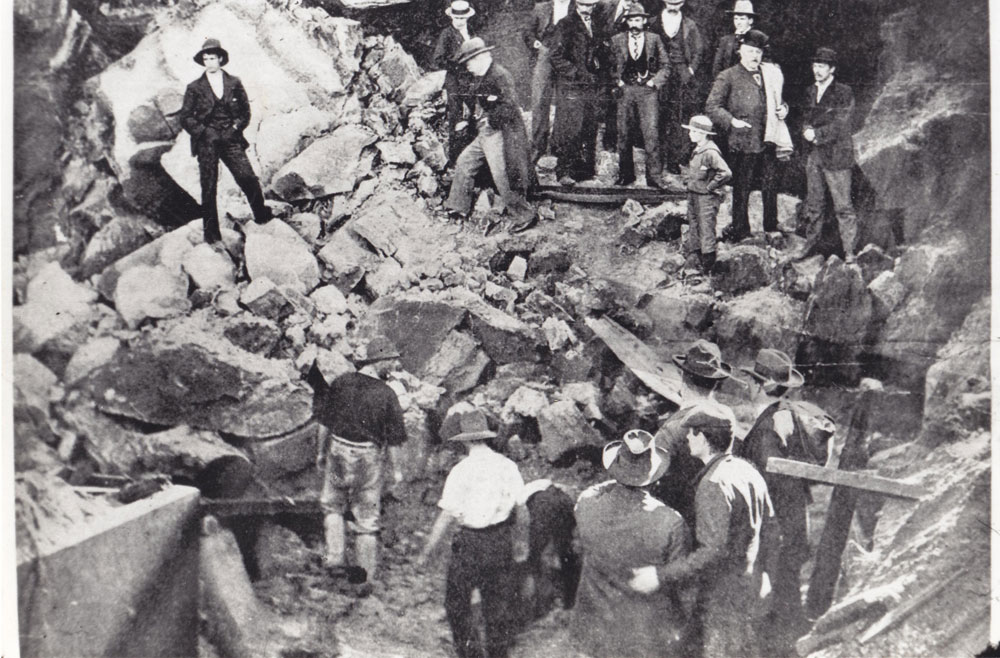At 2pm on 31 July, 1902, just outside of Wollongong in New South Wales, an unsupported roof of a coal mine suddenly collapsed. The collapse pushed methane and air through the main tunnel, where it met an open flame. The mine exploded, taking the lives of 96 men and boys.
This was the Mount Kembla disaster, the biggest mining tragedy in Australian history.
Catastrophic events like Mount Kembla, Aberfan in the UK and Benxihu in China, are caused by principal mining hazards.
What is a Principal Mining Hazard?
Principal mining hazards (PMH) are hazards on mine sites that have the potential to cause devastating events that lead to multiple fatalities in a single incident or repeated incidents.
DMIRS defines a PMH as: “any activity, process, procedure, plant, structure, substance, situation or other circumstance relating to the carrying out of mining operations that has a reasonable potential to result in multiple fatalities. These may be in a single incident or a series of recurring incidents.”
Examples of principal mining hazards are:
- Explosions
- Fires
- Structure or ground collapse
- Driving
- Airborne contaminants (including dust)
- Gas leaks
- Floods
- Rockfall
What is a Principal Mining Hazard Management Plan (PMHMP)?
A PMHMP isn’t just a piece of paper. It’s a comprehensive plan developed with a lot of thought and expertise. This plan will not only keep you compliant under WA law, but it will help you identify and manage the biggest threats to your workers.
A PMHMP includes risk assessments, control measures, and monitoring procedures. It’s a living document, meaning it gets updated regularly to adapt to new information. The plan needs to specially address the mine sites unique operational environments, and include a risk assessment and mitigation strategy for each PMH.
Do I need a PMH Management Plan?
We’re often asked: I have a risk register that documents all my hazards, so do I need a PMHMP?
If you operate a mine site in WA, the answer is yes.
Under West Australia’s WHS Act 2020, you are required to have a PMH management plan in place if you have principal mining hazards on your site – and being a mine operation, it’s highly likely you do. A risk register will not cover each PMH extensively enough.
However, if your mine site is outside WA, you should check with your state’s jurisdiction.
Is a Principal Mining Hazard Plan the Same as a Mine Safety Management System?
No, they’re not the same, but they’re mates. Your PMHMP will be part of your broader mine safety management system, or an extension of your critical risk plan.
RELATED: Critical Risk Management
Can I use a Principal Mining Hazard plan template?
Not really. You can follow a principal mining hazard plan template structure to guide you, but never copy and paste a PMHMP that you find elsewhere. This is because yours must be specific to your site and include input from relevant workers and stakeholders.
Before preparing the PMHMP, the mine operator should consider how it will be established, implemented, and integrated with other plans and communications. The mine operator must ensure that the development, and review as necessary, of the PMHMP, is undertaken in consultation with relevant workers and representatives. Talk about team involvement and comms with the frontline.
How to Write a Principal Mining Hazard Management Plan
1. Identify Hazards
Gather a team of skilled and experienced colleagues and identify the principal hazards. Consider individual and combined effects of these hazards.
2. Assess Risks
Conduct a comprehensive and systematic risk assessment, involving competent colleagues to ensure a thorough analysis.
3. Develop the Plan
Include identification and description of the hazard, risk assessment, and control measures required to manage the associated risks. Ensure it’s prepared and reviewed by competent persons and involves consultation with relevant workers and their representatives.
4. Document the Plan
As well as keeping your plan updated and accessible to all workers, make sure it’s communicated in a way that’s easily understood by those who will use it. No one wants to pour over a thick binder of documents, so if you know your target audience will prefer the information is made into a colourful infographic, interactive e-learning, or an explainer video, you’re going to get a far better engagement and retention rate.
5. Consultation
Engage with workers, health and safety representatives, and committees during the development, implementation, and review of the PMHMP.
6. Review
Regularly review the PMHMP to ensure it remains effective and relevant.
It can be overwhelming keeping up with legislation, so if you’d like our team of specialists to do your principal mining hazard management plan, please get in touch.
Image: University of Wollongong Archives



